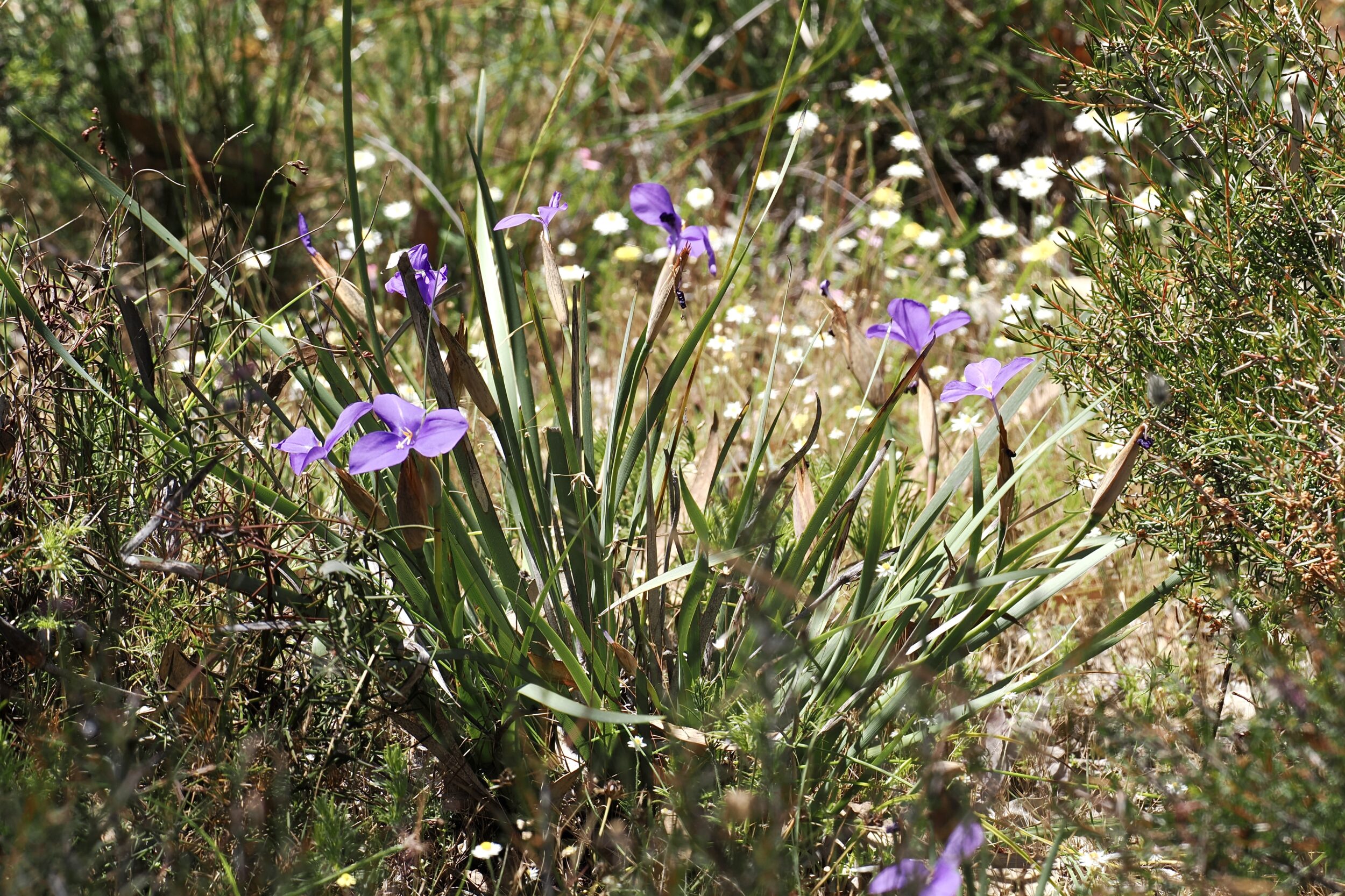Most of southwest Western Australia has a very extreme version of a so-called “Mediterranean” climate.
There are huge variations from one year (or sequence of several years) to another.
However, in a “proper” year much more than half of the annual rainfall arrives in June-July-August, when the weather is relatively cool.
In December-January-February it is “normally” very hot, and rain falls hardly at all.
Very few watercourses flow “permanently”; to label more than a few of them as “rivers” is to indulge in flattery…or wishful thinking.
There are, however, many modest, so-called “winter creeks”.
In many years, flowering plants and grasses “get cracking”, to take advantage of the “window” when such a creek is no longer flowing, but its bed is still damp-ish, and the weather is not yet ferociously hot.
The featured image is a “window” into that very “window”.
The “splashes” of purple and white/yellow are provided, respectively, by one of several species which are known as “flags” or “purple flags”, and by one or two of the huge number of WA-endemic species that are commonly called “daisies”, “everlastings”, or “everlasting daisies”.
Other chapters in this series will offer closer views of “flags” and “daisies”.
(photo is copyright Doug Spencer, taken at 11.03 am on 30 October 2023 in wandoo woodland, circa 100 kilometres southeast of Perth’s CBD)
